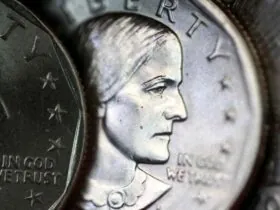Do you toss your spare change into a bowl or piggy bank without a second thought? You might want to reconsider the value of those coins. Some quarters are worth far more than their face value, with collectors and numismatic experts willing to pay hundreds of dollars for coins with specific minting errors.
If this sounds intriguing, keep reading to discover how you can identify a 25-cent coin that might fetch you over $200.
Why Minting Errors Matter
This Article Includes
The value of a coin often skyrockets due to rare minting errors. These flaws occur during the production process, making such coins unique and highly sought after by collectors. Among these errors, some involve coins being struck on the wrong planchets (metal blanks), creating fascinating and valuable anomalies.
"National #Bank Notes help tell the story of American #History from 1863 and the #CivilWar to 1935 and the Great Depression." via Numismatic News https://t.co/2dtEvZVmEl
— American Numismatic (@ANACoins) September 3, 2023
A $200 Quarter? The New Hampshire Error
One particularly notable example is a 25-cent coin from the year 2000, part of the U.S. Mint’s state quarter series. This coin features the design for New Hampshire on its reverse but wasn’t minted on a typical quarter blank. Instead, it was mistakenly struck on a Jefferson nickel planchet.
This minting error caused the coin to have an unusual size and weight, which caught the attention of collectors. According to The Sun, one of these coins sold for nearly $216 on eBay in 2022, proving that even minor details can lead to significant value.
How to Identify a Minting Error
Planchet errors, like the New Hampshire quarter struck on a nickel blank, are just one type of mistake to look for. These errors can include:
- Coins struck on the wrong planchet.
- Misaligned or double strikes.
- Missing or incomplete designs.
To confirm if a coin in your collection is unique, inspect it carefully for irregularities in weight, size, or design. Using a magnifying glass or a digital scale can help you spot these errors.
What Should You Do If You Have a Rare Coin?
If you suspect you have a valuable coin, consult a numismatic expert. Professionals can authenticate and appraise your coin, ensuring you avoid scams and get the best possible value. Be cautious about selling directly to buyers without expert advice, as counterfeiters and opportunists may take advantage.
Don’t Ignore Unusual Coins
The next time you find a peculiar-looking coin, don’t dismiss it as ordinary. That quarter in your pocket or spare change jar could be worth far more than you think.
So, pay closer attention to your coins and check for signs of minting errors. With a bit of luck, you might just uncover a hidden treasure that’s worth more than its weight in gold—or at least in silver!







Leave a Reply